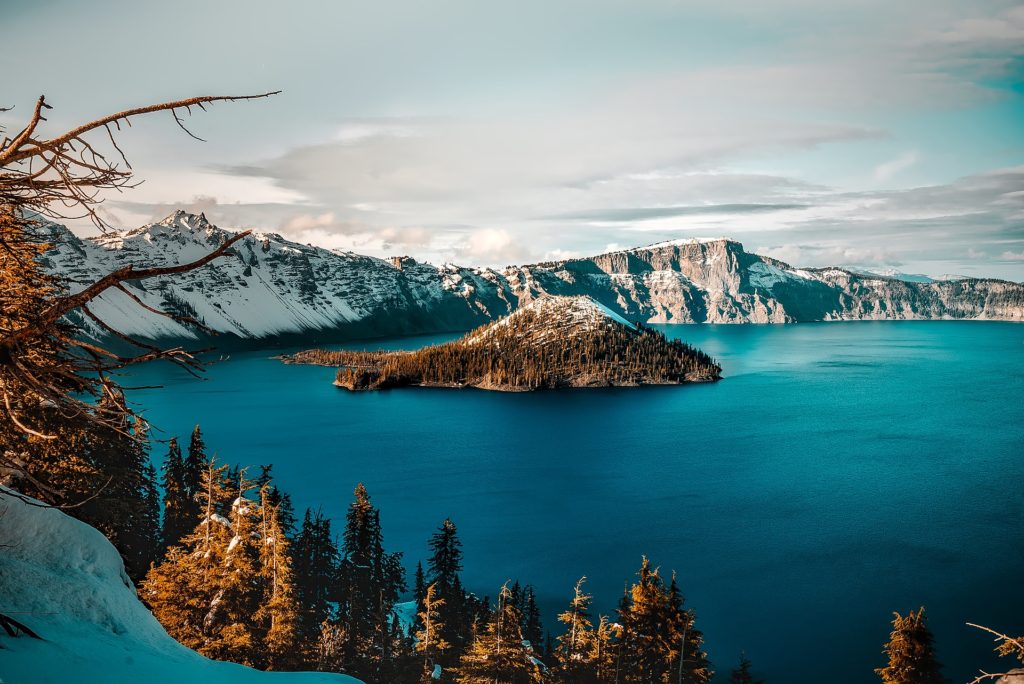
12 Most Common Mistakes made by National Park Visitors and How to Avoid Them
- Jennifer Melroy
- Last Modified April 22, 2021
- First Published on January 26, 2020
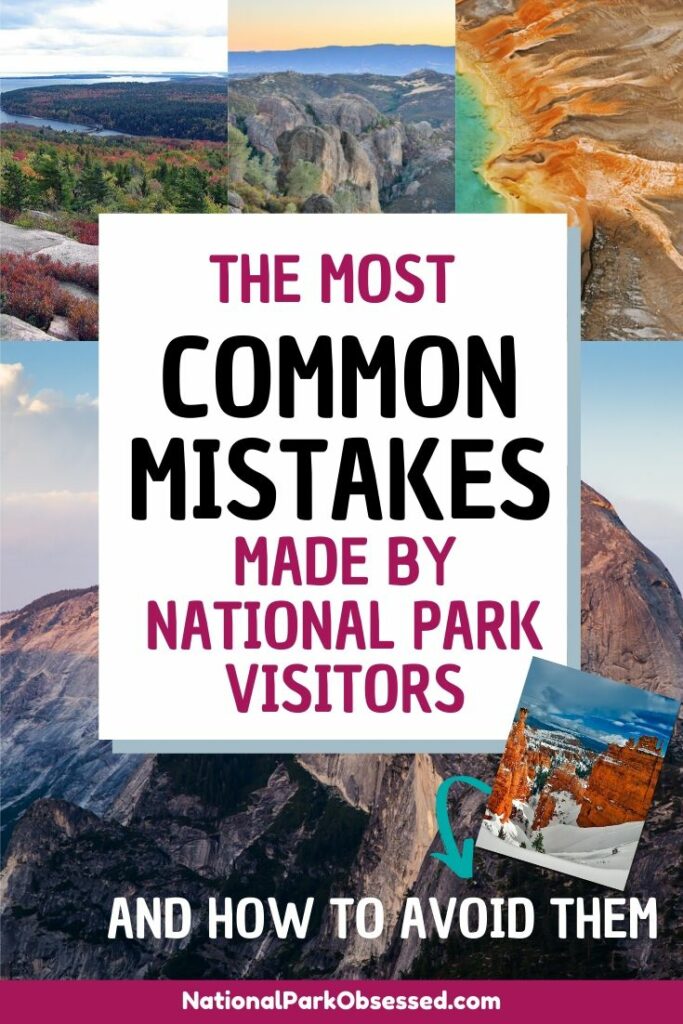
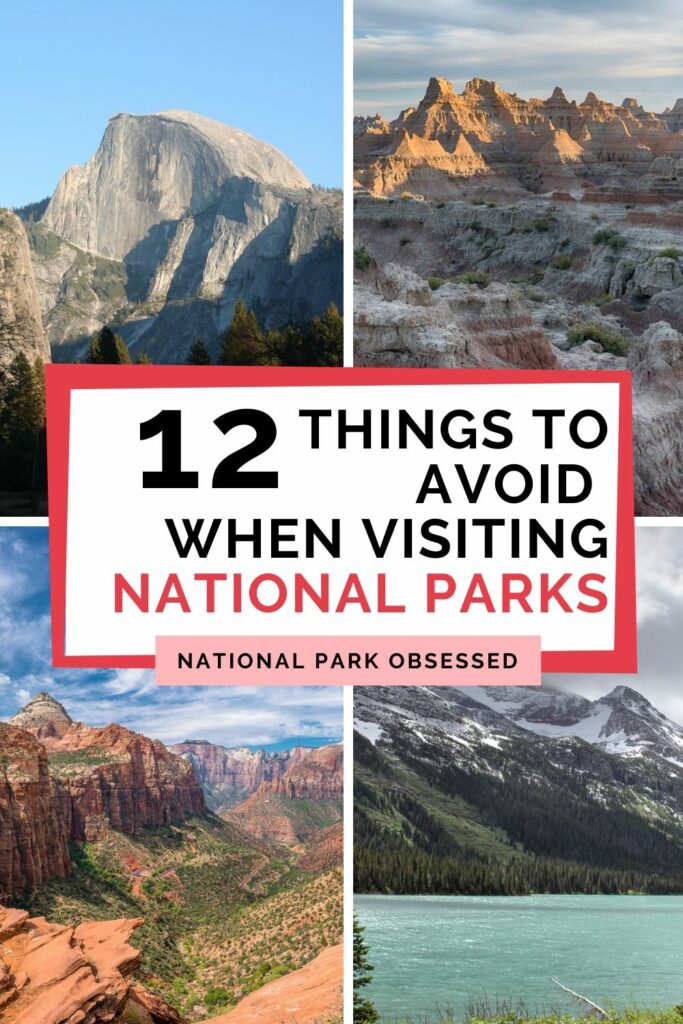
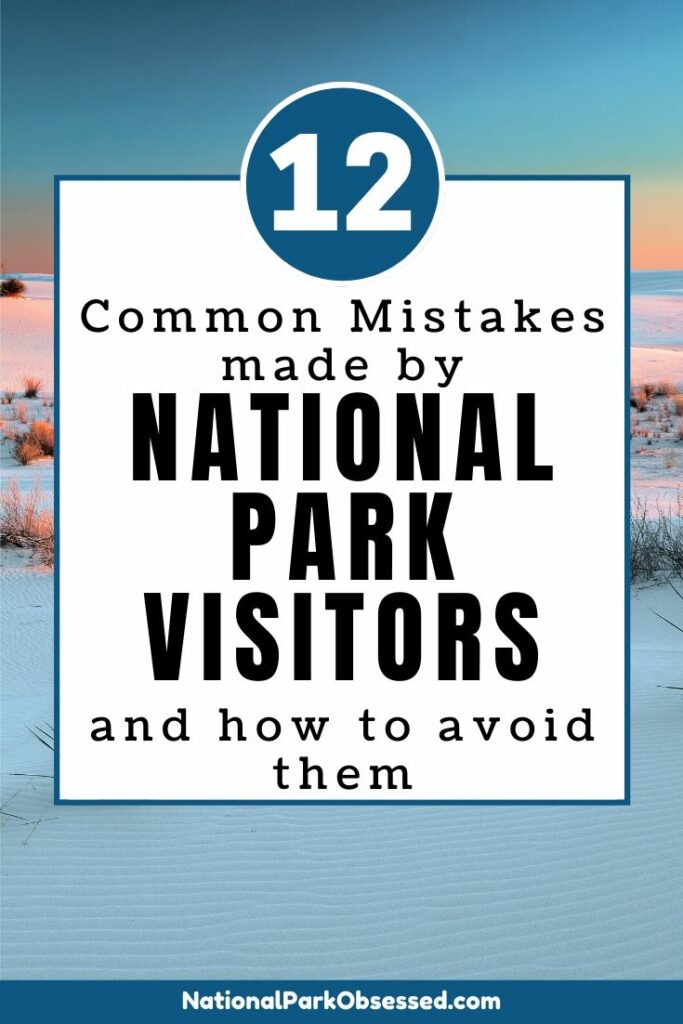
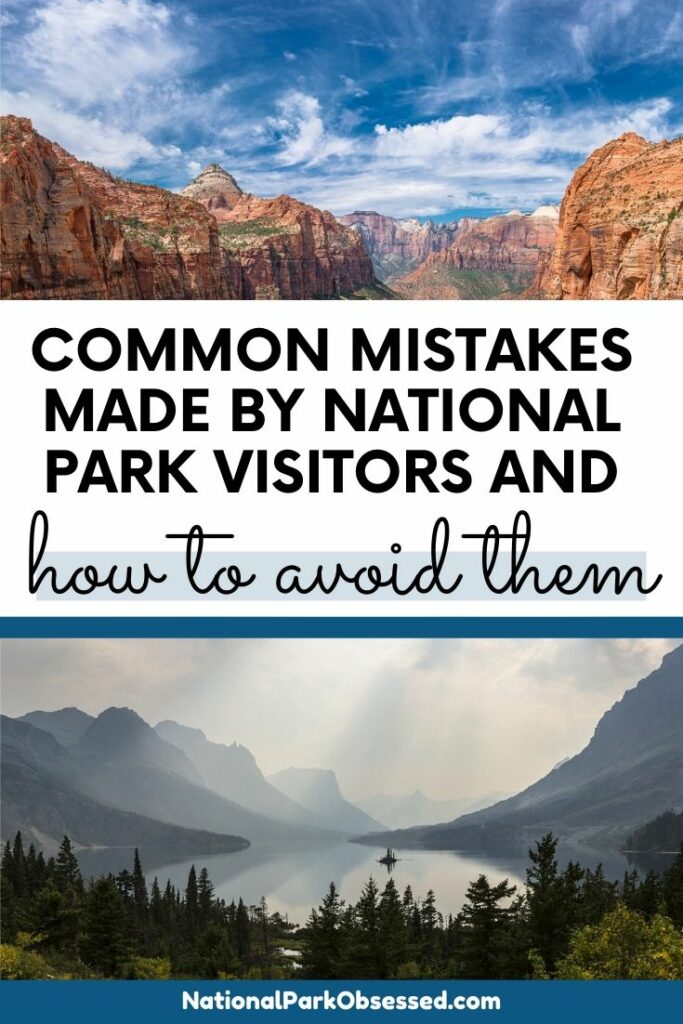
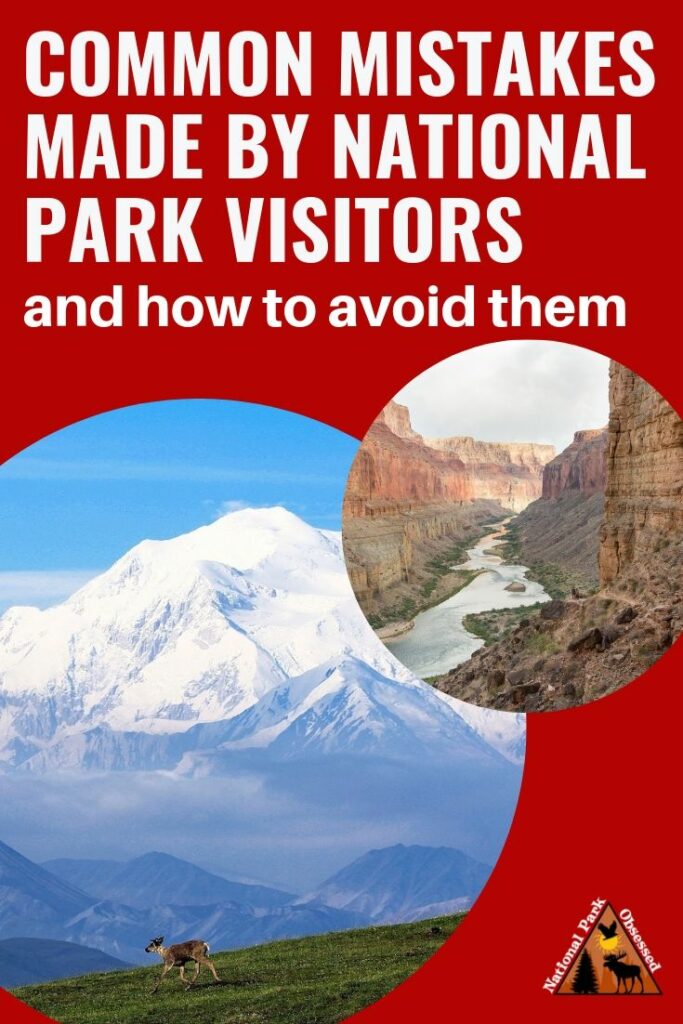
This post may contain affiliate links, meaning if you book or buy something through one of these links, I may earn a small commission at no extra cost to you! Read the full disclosure policy here
Visitation to the United States National Park is at an all-time high. Every year more and more people are heading to the National Parks to experience the wonder that is the National Parks. More and more people are looking forward to hiking Yosemite’s Half-Done, see the eruption of Old Faithful in Yellowstone, or witness the sunset behind Delicate Arch in Arches. With 419 national parks, you can visit a new park for a week, and it will take you eight years to see all the parks. There is more park to see then there is time. Learn how to optimize your trip without making common mistakes.
With over 200 national park service units under my belt, I have seen, heard, and made almost every mistake one can make in a national park. For many visitors, a national park vacation is the trip of a lifetime. They should be making the most of the trip, yet many don’t. Here are the 12 most common mistakes made by national park visitors.
- Most Common Mistakes made by National Park Visitors and How to Avoid Them
- Mistake #1 – Not planning ahead
- Mistake #2 – Not reading the park newspaper or map
- Mistake #3 – Skipping the visitor center
- Mistake #4 – Fill-up your gas tank
- Mistake #5 – Decide what souvenir you are going to collect
- Mistake #6 – Don’t be so focused on the plan
- Mistake #7 – Get up and get moving
- Mistake #8 – Going to bed
- Mistake #9 – Not stopping and asking
- Mistake #10 – Not following proper road ediquitte.
- Mistake #11 – Look up from the camera
- Mistake #12 – Interact with the Wildlife
- Have you made any of the common mistakes? What other mistakes have you made?
Most Common Mistakes made by National Park Visitors and How to Avoid Them
Mistake #1 – Not planning ahead
Proposed Solution – Do your research on the park. Make sure you are prepared for the conditions and make a list of things you want to do and make reservations where possible.
The National Park system has 419 units and each one has different challenges in visiting. These challenges are as unique as the parks themselves. For some parks, a winter visit is easy and amazing. Other parks are difficult and have limited services. You need to be sure you are ready and willing to handle whatever the park can throw at you.
Don’t be like the following person in a National Park Facebook group “Headed to Glacier National Park mid-Febuary. This Texas girl is NOT used to driving in snow and ice. My Airbnb is close to the park, 6 miles. Is there transportation Uber, Taxi, etc from the Airport? What about getting around in the park?”
A quick search would reveal that Glacier National Park that there is no winter public transport in Glacier and only 12.5 miles of road is maintained. The weather is unpredictable and snow and ice are highly likely. These are not conditions someone with limited experience with snow and ice should be driving. Glacier is remote and has limited cell service so a small accident could turn into a serious situation quickly.
On top of the weather condition concerns, the National Parks are seeing record visitation and it is stressing the infrastructure and making reservations for camping, lodging, dining, and other permits harder and harder to get. For many of the popular parks, a reservation is a must and needs to be made as soon as possible.
For example, I am headed to Katmai National Park in July 2020. The camping permits for Katmai’s Brooks Camp are released on January 5 at noon (EST). I logged on at 12:00 pm and got my camping permits. By 12:15 pm, the entire 1,860 July camping permits were GONE. I have heard reports that Yosemite campsites being fully booked within seconds of being released.
In general National Park reservations open 6 months in advance or 6 months before the summer season. There are a lot of are exceptions to this rule so check with your desired park and start planning as early as possible.
Unless you have unlimited time and money, there are only so many activities you will have time for during your visit. It is a good idea to make a list and a rough outline of things you would like to do while in the park.
Mistake #2 – Not reading the park newspaper or map
Proposed Solution – Read the park literature.
National Park Service is a busy organization. They have very limited resources to manage and maintain our parks. If they have taken the time and effort to produce a handout, there is very likely an important reason for it. So READ it.
All National park service units have a guide map with a detailed map of the park. The major stops will be listed. On the back of the maps is a collection of information on the park. This can give you a quick overview of the parks.
For the larger units such as National Park, visitors will be handed a newspaper. The newspaper has important park information. It will cover operation hours of visitor centers, the services offered in the park, animal and safety warnings, hiking trails, ranger lead program and any other important information to know.
Mistake #3 – Skipping the visitor center
Proposed Solution – Stop at the visitor center.
The visitor centers are full of information to make your park visit better. The rangers have the latest and greatest information on the parks. The park rangers have valuable insight. Very few people know more about the park than they do. They will have information on trail and road closures, animal sighting, and so much more. All you have to do is stop in and ask.
The visitor center is almost always my first stop in a new national park. I want to make sure my trails are open and to check and make sure there are not any issues I need to be aware of. I also ask about recent animal sighting. I am on a quest to photograph a mountain lion and I like knowing if there are any recent sightings and where.
In Theodore Roosevelt, a ranger shared that one of the prairie dog colonies had a badger and coyote working together to hunt the prairie dogs. I spent two evenings hanging out in that colony and got to see these two predators work together to get a meal.
Before you leave the visitor center, make sure to stop and get your National Park Passport stamped.
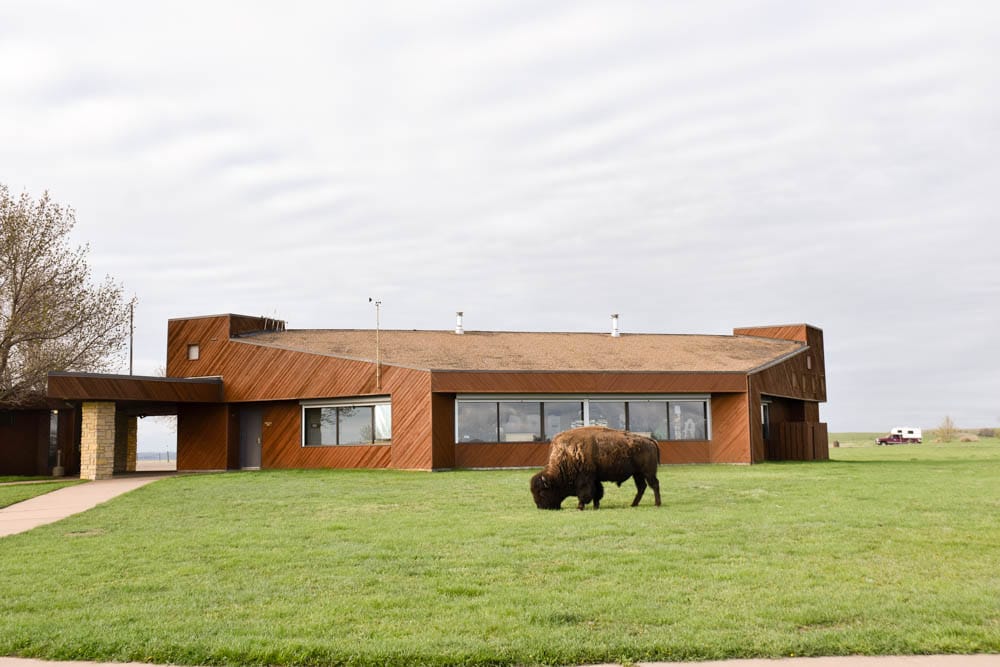
Mistake #4 – Fill-up your gas tank
Proposed Solution – Fill your gas tank before entering the park.
Many national parks are remote parks and visiting them can require a lot of diving. Most parks do NOT have gas available within the park boundaries, so if you run out of gas, you are looking at a rather expensive bill. Come into the park prepared and fill-up at one of the nearby towns BEFORE entering the park.
Almost all national parks have a small town near its entrances and this is the perfect place to fill-up. Do not count on being able to buy gas within the parks.
The only ones I can think of is Yellowstone, Crater Lake, and Yosemite. It is a scary thought to get to Paradise in Mount Rainier National Park and realize that you need gas. Fill-up when you get off the interstate and head towards the park. Fill-up a second time at a gas station near the park entrance, just to be safe.
Mistake #5 – Decide what souvenir you are going to collect
Proposed Solution – Pick you collectible before starting your national park adventure.
National parks offer a range of souvenirs. If you are going to be visiting a lot of parks (and make it a goal to visit them all), decided what you are going to collect before you start. It is awful to start collecting something and realize you are missing your first couple of parks. I am still missing a few iron-on patches from my adventures.
There are a range of paid collectibles such as t-shirts, iron-on patches, shot glasses, coffee mugs, stickers, postcards, or magnets. I suggest picking some small that is easy to pack.
If you are trying to visit all the parks on a budget, there are a couple of free souvenir options. The first and most popular are the cancellation stamps. These free stamps are found in almost every national park. The other free (sometimes has a nominal fee) are the Junior Ranger badges. Many adults and children love completing the workbooks and getting sworn in as a junior ranger.
Mistake #6 – Don’t be so focused on the plan
Proposed Solution – Let go and be prepared for anything.
National Parks are a time to get away from the busy schedule of life.
They are about exploring the park and being in the moment. It is about taking 5-30 minutes to enjoy seeing the moose or changing plans because the avalanche lilies have bloomed along one of the trails. It’s about snagging that Zion Subway permit, the people in front of you just handed back. A plan is great, but the plan should be an outline. Most of the parks aren’t going away where. Except for the glaciers, they are moving downhill and melting. I guess a few of the volcanic parks could drastically change if they were to erupt. But for the most parks, the parks are not going anywhere and any activities not done today can be done on another visit.
If you are in a park that offers optional paid tours such as cave visits, then you do need to make it to the meet points on time but other no need to rush a park visit.
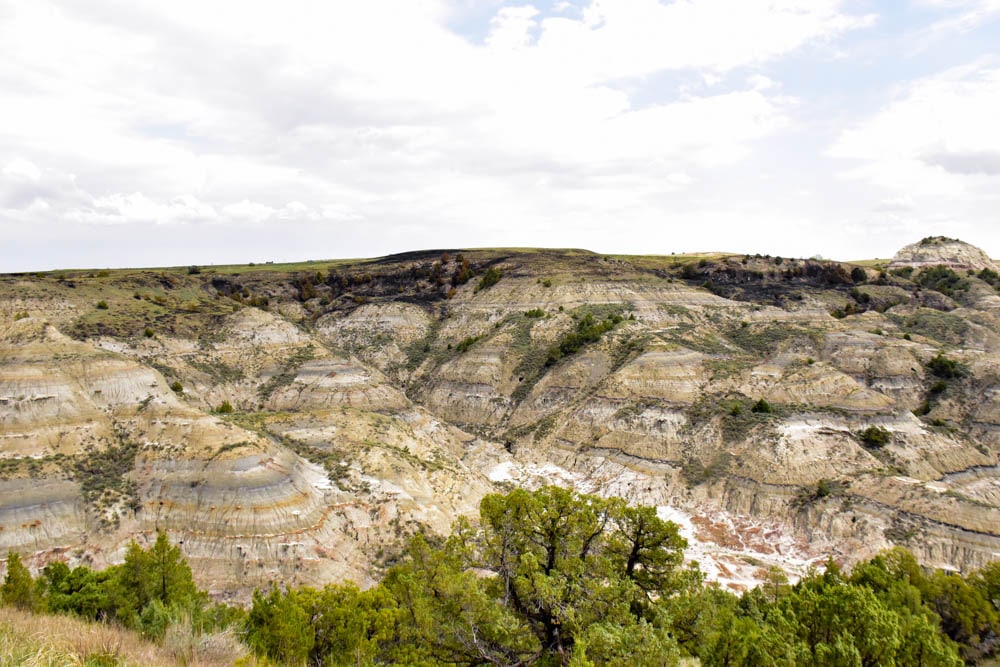
Mistake #7 – Get up and get moving
Proposed Solution – Wake up and smell the roses before sunrise
A national park visit isn’t a time to sleep in. There are several reasons to get up early in the parks.
Many of the parks are world-renowned for their sunrises – Bryce, Acadia, and Canyonlands to name a few. Watching the sunrise in Bryce is quite a sight, but it can be a crowded sight. Decided on your dawn watching spot during the day and then the next morning head straight there. Sunrise watching is becoming quite popular so getting to your sport well before sunrise is a must.
Wildlife is more active in the mornings, and it can be a great time to see wildlife. I have gotten to see some amazing wildlife like wolves returning to a den by visiting early in the morning.
The last reason to get up early is parking in most national parks is somewhat limited. Once the lot is full, it’s full and no more parking is found nearby. If planning to hike a favorite trail, the lot can be packed very early in the morning.
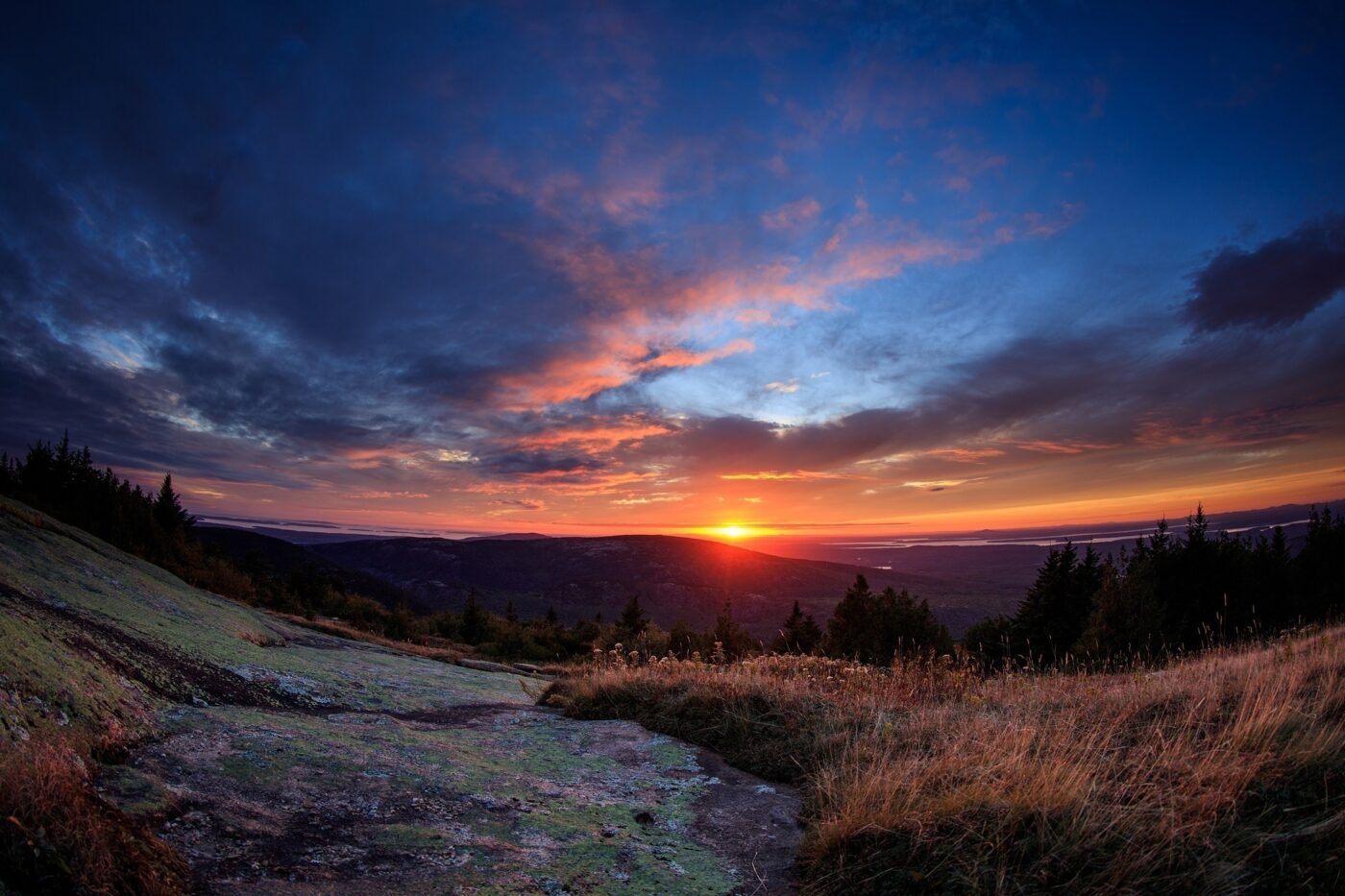
Mistake #8 – Going to bed
Proposed Solution – Take an afternoon nap and be ready to stay up late and watch the stars.
The absolute worst thing one can do in a national park when the skies are clear is going to bed. So many people live in cities were seeing a handful of stars in the norm. Nothing can compare to seeing the Milky way fill the sky. Almost all the national parks are far enough from cities that light pollution is minimal. Several national parks are certified International Dark Sky Parks. Astro-viewing can be unbelievable in many parks.
If you are fortunate and in a northern park, it is possible to see the northern lights as well. I once saw terrific stars and the northern lights in Badlands National Park.
RELATED – Best National Parks for Northern Light Viewing
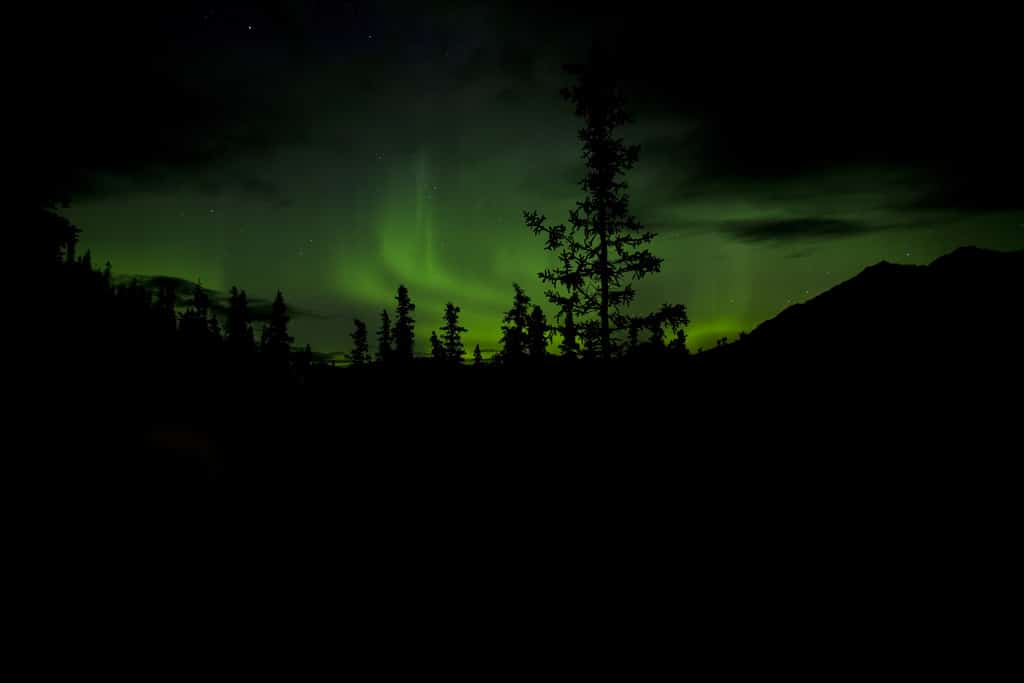
Mistake #9 – Not stopping and asking
Proposed Solution – Just ask.
The best way to spot wildlife is to look for vehicles pulled over and people standing there looking in one direction.
If you see someone pulled over, pull over as well. Make sure your vehicle is all the way off the roadway. Get out of your car quietly and walk over and ask what they are looking at. Don’t be afraid to stop and ask. 99% of the people are willing to show you what they are looking at. If they are using a spotting scope, they will probably let you look thru it. I have never had anyone not share what they are looking at.
Also pay attention to what is going on around you. On my 2019 Yellowstone trip, I was coming got caught in a bison jam. There was a herd of bison near the road and lots of people were stopping to get a closer look. I didn’t plan on stopping, but when I drove by I noticed the park ranger who was monitoring traffic had a camera out and was looking in the opposite direction of the crowds.
That made me stop and walk over to the ranger to see what she was photographing.
Mistake #10 – Not following proper road ediquitte.
Proposed Solution – Make a new friend and ask.
The best way to spot wildlife is to look for vehicles pulled over and people standing there looking in one direction.
If you see someone pulled over, pull over as well. Make sure your vehicle is all the way off the roadway.
Get out of your car quietly and walk over and ask what they are looking at. Don’t be afraid to stop and ask. 99% of the people are willing to show you what they are looking at. If they are using a spotting scope, they will probably let you look thru it. I have never had anyone not share what they are looking at.
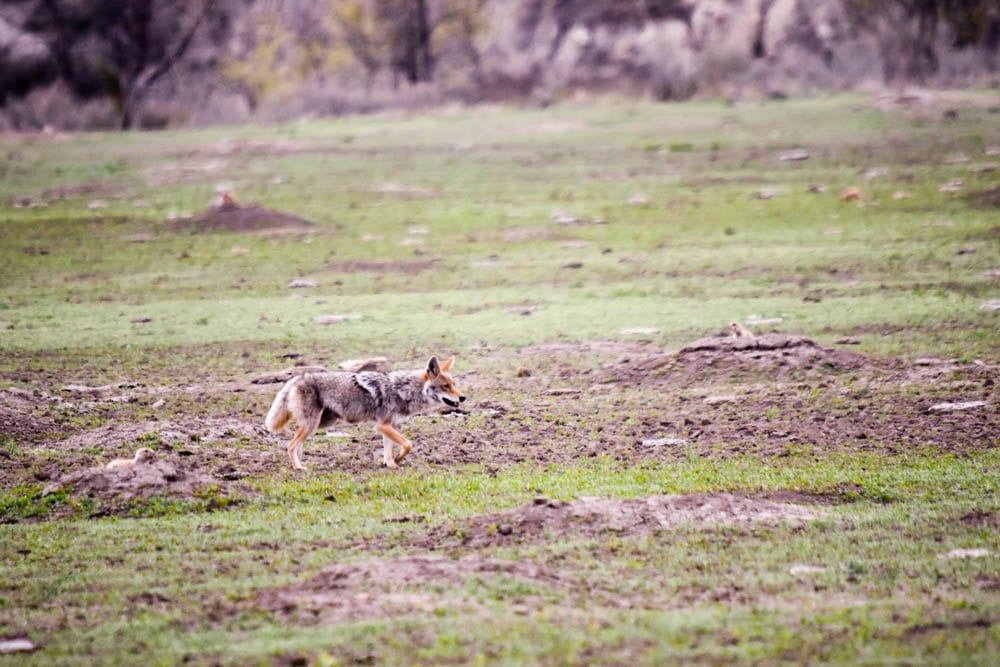
Mistake #11 – Look up from the camera
Proposed Solution – Take a second to enjoy the view without a camera in the way.
I am guilty of this one. Sometimes I get so focused on taking photos that I lose myself behind the camera. I have slowly learned that I need to stop photographing and just be in the moment and enjoy the view.
The national parks are natural wonders and historic sites and should be enjoyed out from behind a screen. Photos are a fantastic way to remember your national park visit but take a moment and look up from the camera. Stand there and say wow, I am looking at Half-dome over the Yosemite Valley or I am watching the Alaskan Brown Bears fish for salmon. Picture are tremendous but standing there and enjoying the moment without fooling with a camera is even better.
Mistake #12 – Interact with the Wildlife
There is a reason wildlife is called WILDlife. They are wild animals. In the national parks, they need to stay wild. This means that no matter what they need to be left alone. There is absolutely no reason on this planet that you should feed them, offer them a drink of water, or try to pet them. Think of wildlife like toddlers. Once they learn a bad habit, it is near impossible to break them of this habit. It is not good for the squirrels, chipmunks, and other cute furry creatures to be feed (in particular salted sunflower seeds). All that sodium makes for fat animals that are easy prey for something bigger. Plus those cute little animals can be disease vectors for rabies, hantavirus, and plague.
The bigger animals (like bears) become a danger to human after being fed. A fed bear can start approaching humans and get aggressive once they know humans mean food. As park service says “A fed bear is a dead bear.”
Every year, a handful of people learn the hard way why you don’t mess with the large herbivores in the park system. Any and all of the animals can be dangerous. Bison have been known to chase and gore people. The elk regularly kick people (Mammoth Hot Spring in Yellowstone is commonplace for this). Stay at least 25 yards from these animals and odds are in your favor that nothing will happen to you.
Have you made any of the common mistakes? What other mistakes have you made?

Jennifer Melroy
Hi, I'm Jennifer!
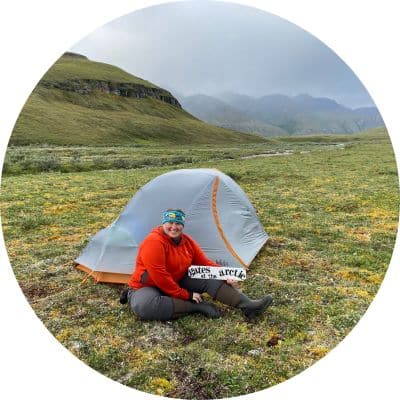
Welcome to the wonderful world of National Parks. I'm here to help you plan your NEXT amazing adventure through the United States National Parks and beyond. I want the national parks to be accessible to all.
I live in Tennessee, and when I'm home, you can find me hiking in the Smokies and the Cumberland Plateau.
58/63 National Parks
250+/423 National Park Units
Want to know more? Start Here.
Explore More
ACKNOWLEDGEMENT OF LAND
On this site, we promote travel to the United States and beyond that are the traditional lands of Indigenous and First Nations peoples.
With respect, I make a formal land acknowledgment, extending my appreciation and respect to these lands’ past and present people.
To learn more about the people who call these lands home, I invite you to explore Native Land.
DISCLAIMER
National Park Obsessed assumes no responsibility or liability for any errors or omissions in the content of this site (NationalParkObsessed.com). The information contained in this site is provided with no guarantees of completeness, accuracy, usefulness or timeliness. You are encouraged to conduct your own due diligence before acting on the information provided on this site and should not rely on the opinions expressed here.
There is an inherent risk in all outdoor recreation activities, the reader assumes all responsibility for their own personal safety.
DISCLOSURE
We are a participant in the Amazon Services LLC Associates Program, an affiliate program designed to provide a means for us to earn fees by linking to Amazon.com and affiliated sites.
Privacy Policy • About Us • Contact
Select stock photography provided depositphotos
Copyright ©2023 National Park Obsessed, LLC
Privacy Overview
Get a FREE 63 National Park Checklist
KICK START YOUR Planning
with the Ultimate National Park Planning Bundle.
This 162-page bundle includes a must see guide for each National Park along with a travel planner and the Beginners Guide to Planning a National Park Trip Planning eBook
Last Updated on 22 Apr 2021 by Jennifer Melroy

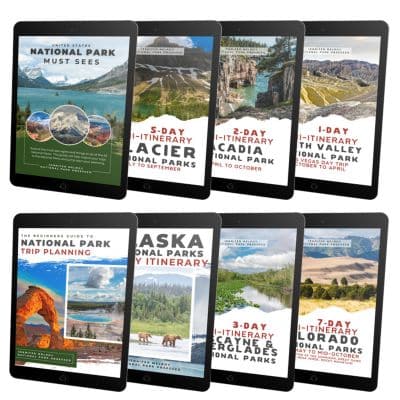
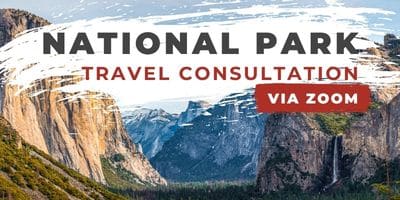

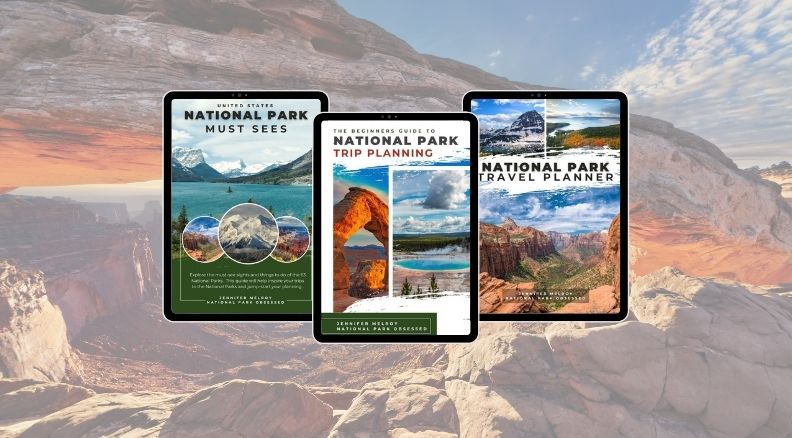
29 Comments
Ryan K Biddulph
Leave the wildlife alone guys! Big fan of sitting back from a respectful distance to let wild animals behave like….wild animals. Some tourists are a little too curious and others complete morons LOL.
Jennifer Melroy
I totally agree with all of this.
Clazz
Such great tips!! I’m currently planning a big national parks trip and the key word there is planning. 🙂 But equally it’s great to be able to be spontaneous while you’re there. I always collect postcards and usually keep maps and things too, so maybe I’ll put together a map collage at the end. 🙂 Can I ask what cancellation stamps are?
Jennifer Melroy
Cancellation stamps are small stamp at every NPS site that has the park name, state, and date you visited on it.
Christina Pfeiffer
There are some good tips here, Jennifer. I enjoy exploring national parks. You certainly feel uplifted while surrounded by nature and fortunately, there are still many national parks in the world to explore.
Jennifer Melroy
There are about 3,000 parks around the world to explore.
Medha Verma
I completely agree, not only in context of national parks but in general, about the souvenirs. I realised I didn’t collect any on my first few international trips and thereafter I began collecting fridge magnets, only to realise I was missing few for the first couple of countries I visited. Luckily, I found friends going to those countries later and asked them to bring for me. Related to National Parks, I agree about visiting the Visitor centre first, there is so much info available there, especially detailed maps, which I feel shoudl definitely be referred to. I can see you have a good amount of experience visiting National Parks, you have given some great tips here!
Jennifer Melroy
Yep that is my issue. I am missing about 10 patches and stamps from those 10 early parks.
Rosemary
Great tips. My personal favorite is star gazing and simply reveling in the beauty of the night sky. I had never thought about deciding on souvenirs or memorabilia ahead of time. Makes sense to keep a cohesive collection of momentos. I look forward to visiting more national parks including Bryce…and I will certainly keep these tips in mind.
Jennifer Melroy
I like to decide first because I have about a dozen parks I have visited and yet I don’t have patches from them.
Kate Flores
I am guilty of “looking on the camera” and “focus on the plan” haha! As a blogger, we always want to make perfect pictures and share it with others but sometimes we missed “being” there. As a parent, I always “focus on the plan” with the kids but tI agree with you, we can’t always stick with it. In the end, all of us are disappointed because of being torn in between – not following the rules and not enjoying as we expect it. National Parks are always fun-filled, nature-focus and informative, teaching us not to rush life. Thanks for this!
Jennifer Melroy
Yep and sometime even bloggers need to step back and just enjoy.
Suruchi Mittal
This is such a wonderful post. Actually one should really take care of these pointers. The most important ones I say, is to fuel up your car tank, research before heading and talk at the visitor center. The roads or trails may be closed for one or some other reason. And yes don’t sleep, take time to roam around and milky ways are best in National parks.
Jennifer Melroy
Most of the parks don’t have fuel in them so filling up is important.
Hannah
This is a really great article – there are so many good tips on here for visiting National Parks. We visited 4 this year, and noticed a lot of people ignoring these things – especially staying away from the wildlife! Planning your visit by using the NP newspapers and ensuring you know the entry points and busy times is a great tip too.
Jennifer Melroy
It is frustrating how many people ignore the signs and end up damaging something.
Alli
I love the tips of getting up early and look up from the camera! So important. If I could add one – respect wildlife. When I was in Yosemite National Park there were signs everywhere telling visitors to stay on the boardwalks to protect the meadows. Sure enough, several people would be frolicking in the meadows for a photo opp. You are the visitors, people!
Jennifer Melroy
Yep the parks are being damaged by people looking for photos ops.
Indrani
I realize these are mistakes not to be made. Especially the one of not looking up from camera. I am often so obsessed with capturing everything in camera I fail to observe in real. Animals shouldn’t be fed, I wish everyone followed this.
Jennifer Melroy
Yea, I am tired of the animals being fed. It isn’t helping them.
Anneklien Meanne
Im guilty of the camera, I tend to stop and capture every angle of the National park when ever i see a beautiful scenery. But i still make sure to stop and enjoy the nature- fresh air, wild life etc.
Jennifer Melroy
There is nothing wrong with taking pictures but that needs to be balanced with enjoying the site.
Simon
Really good advice and tips. The one that says, “Look up from the camera” is so true. You miss so much if you just focus on getting that perfect shot. It has happened many times. Imagine you visit Yellowstone park and you didn’t get to really see all the amazing features of it.
Jennifer Melroy
Yep. To many people just look thru the camera and never stop to realised where they are standing.
April
Great tips! Visitor Centers are so important as not only can you get great tips from rangers, but you learn about the history and geology of the park, but you get up-to-date information on road and trail conditions. I always check there first especially if where I’m going is a bit out of the way as I don’t want to head out to not reach my destination. And I love being open to the scenery. In most parks, you find yourself pulling over ALL THE TIME to take in views or wildlife. Just go with the flow. thanks for sharing!
Jennifer Melroy
Visitor Centers are really under appreciated.
Kaisa
This is so great 🙂 your content always makes me happy because I love writing about National Parks, too. Also it’s just nice to see a National Park related post NOT about the shut down right now! D:
Jennifer Melroy
Thanks. Hopefully, this shut down ends before people destroy the parks.
Anna
look up from the camera! So important. If I could add one – respect wildlife. When I was in Yosemite National Park there were signs everywhere telling visitors to stay on the boardwalks to protect the meadows. Sure enough, several people would be frolicking in the meadows for a photo opp. You are the visitors, people